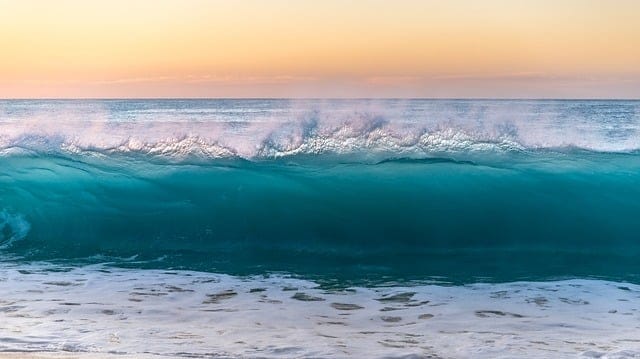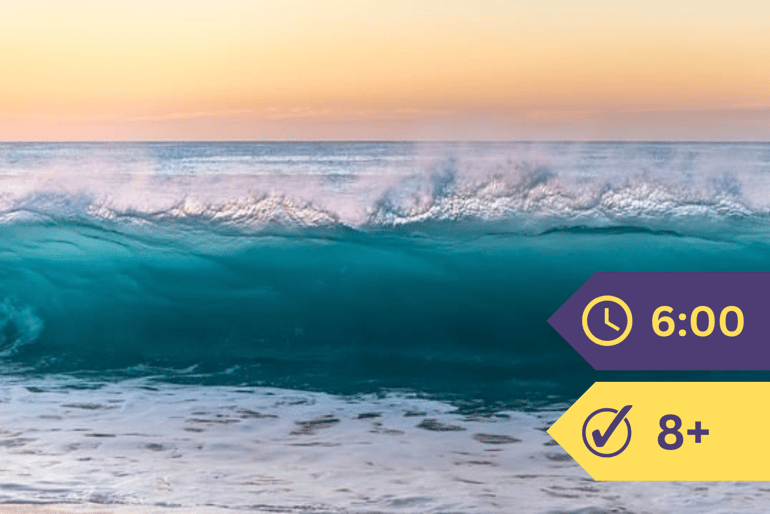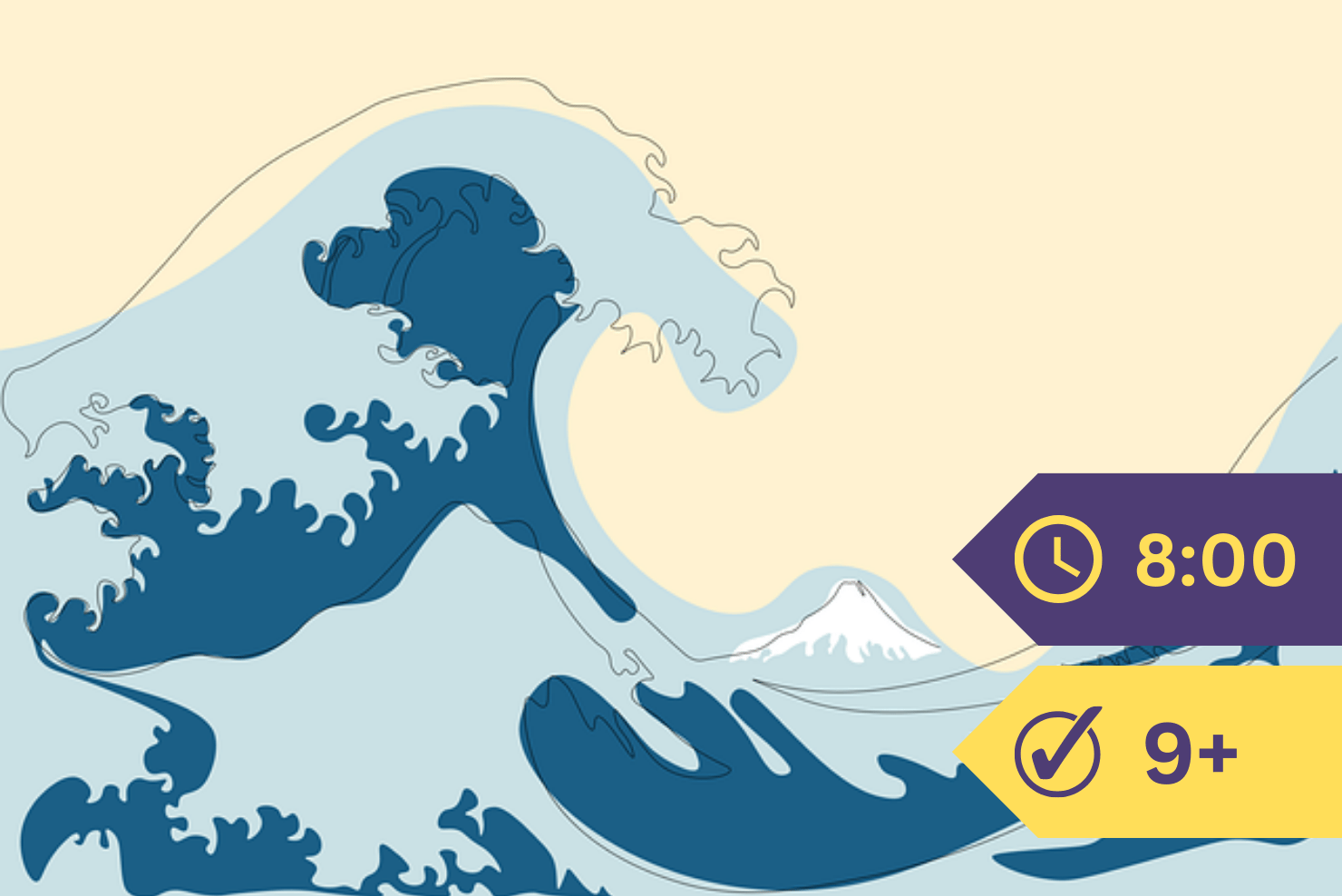Do all those beautiful shells you have in the drawer come from the sea?” asked Emile.
“They come from the sea.”
“Is the sea very large?”
“So large that in certain parts it takes ships whole months to go from shore to shore. They are fast vessels, too, especially the steamships. They go almost as fast as a locomotive.”
“And what is to be seen at sea?”
“Overhead, the sky as here; all around, a large, blue, circular expanse, and beyond that nothing. One travels leagues and leagues, and yet is always in the middle of that blue circle of waters, as if one had not gone far. The rounded form of the earth, and consequently of the seas covering the greater part of it, is the cause of this appearance. The eye can take in only a small extent of the sea, an extent bounded by a circular line on which the dome of the sky appears to rest; and as the circle of the waters is ever being renewed while keeping the same appearance as one advances, it seems as if one remained stationary in the center of the circle where the blue of the sky merges into the blue of the sea. However, by dint of this continued advance one finally perceives a little gray smoke on the line that bounds the view. It is land beginning to show. Another half-day’s journey, and the little gray smoke will have become rocks on the coast or high mountains in the interior.”
“The sea is larger than the earth, the geography says,” remarked Jules.
“If you divide the surface of the terrestrial globe into four equal parts, land will occupy about one of these parts, and the sea, taken all together, the other three.”
“What is under the sea?”

“Under the sea there is ground, the same as under the waters of a lake or stream. Under-sea ground is uneven, just as dry land is uneven. In certain parts it is hollowed out into deep chasms that can scarcely be sounded; in others it is cut up with mountain-chains, the highest points of which come up above the level of the water and form islands; in still others, it extends in vast plains or rises up in plateaus. If dry, it would not differ from the continents.”
“Then the depth is not the same everywhere?”
“Not at all. To measure the depth of the water, a plummet attached to one end of a very long cord is cast into the sea; the length of line unrolled by the plummet in its fall indicates the depth of the water.
“The greatest depth of the Mediterranean appears to be between Africa and Greece. In these parts, in order to touch bottom, the lead unwinds 4000 or 5000 meters of line. This depth equals the height of Mont Blanc, the highest mountain in Europe.”
“So if Mont Blanc were set down in this hollow,” was Claire’s comment, “its summit would only just reach the surface of the water.”
“There are deeper places than that. In the Atlantic, south of the banks of Newfoundland, one of the best spots for cod-fishing, the lead shows about 8000 meters. The highest mountains in the world, in Central Asia, are 8840 meters high.”
“Those mountains would come up above the surface of the water in the place you spoke of, and would form islands 850 meters in height.”
“Finally, in the seas around the South Pole there are places where the lead shows 14,000 or 15,000 meters of depth, or nearly 4 leagues. Nowhere has the dry land any such altitudes.
“Between these fearful chasms and the shore where the water is no deeper than the thickness of one’s finger, all the intermediate degrees may be found, sometimes varying gradually, sometimes suddenly, according to the configuration of the ground underneath. On one shore the sea increases in depth with frightful rapidity. That shore is, then, the top of an escarpment of which the sea washes the base. On another it increases little by little, and one must go a long distance to attain a depth of a few meters. There the ocean bed is a plain, sloping almost imperceptibly, in continuation of the terrestrial plain.
“The average depth of the ocean appears to be from six to seven kilometers; that is to say, if all the submarine irregularities were to disappear and give place to a level bed, like the bottom of a basin made by man, the seas, while preserving on the surface their present extent, would have a uniform layer of water of from 6000 to 7000 meters in depth.”
“I get rather bewildered with all these kilometers,” complained Emile. “Never mind; I begin to understand that there is a great deal of water in the sea.”
“Much more than you could ever imagine. You know the Rhone, the largest river in France; you have seen it at flood, when its muddy waters form a sheet from one bank to the other as far as the eye can reach. It is estimated that in this condition it pours into the sea about five million liters of water a second. Well, if it always preserved that majestic fulness, this large river could not, in twenty years, fill the thousandth part of the ocean basin. Does that make you understand any better how immense the sea is?”
“My poor head is dizzy at the thought of it. What color are the waters of the sea? Are they yellow and muddy like the Rhone?”
“Never, except at the mouths of rivers. Seen in a small quantity, the water looks colorless; seen in a great mass, it appears of its natural color, greenish blue. The sea, then, is blue with a greenish tinge, darker in the open sea, clearer near the coasts. But this coloring changes a great deal, according to the brightness of the sky. Under a bright sun the calm sea is now pale blue, now dark indigo; under a stormy sky it becomes bottle-green and almost black.”








